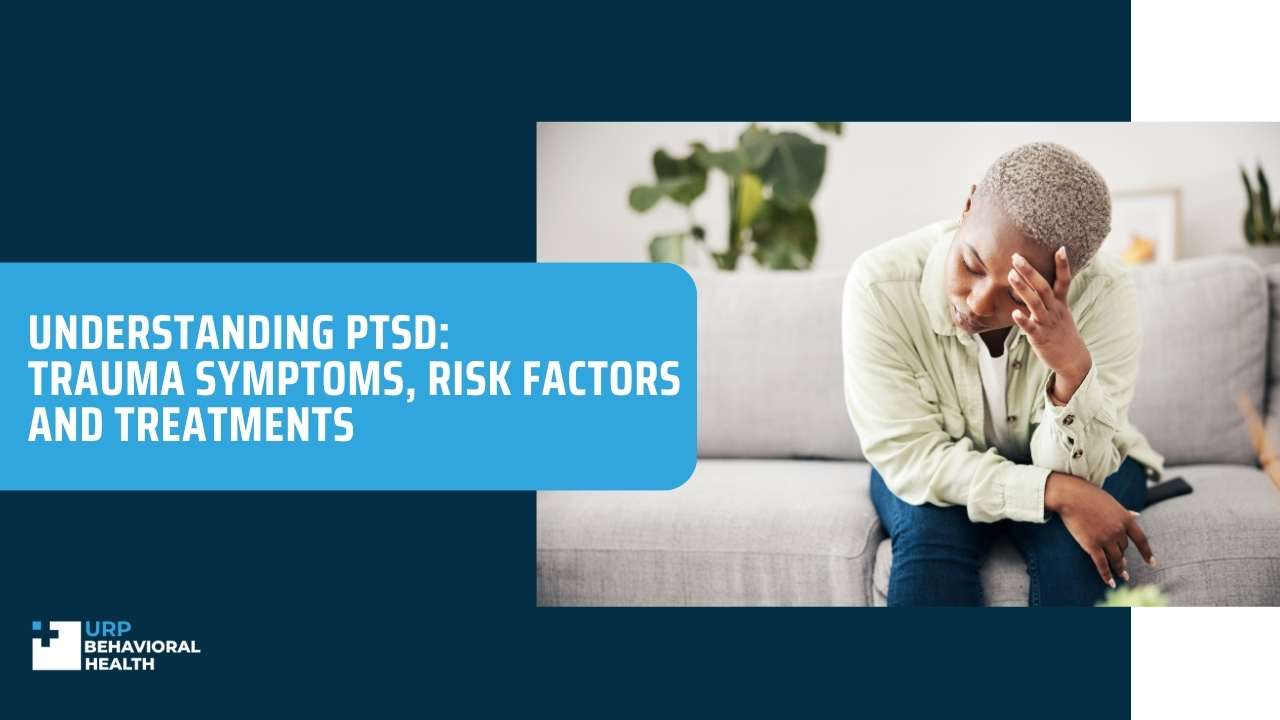Understanding PTSD: Trauma Symptoms, Risk Factors, and Treatments

Statistics by the National Center for PTSD indicate that about 5 out of every ten adults in the US are struggling with PTSD. In the past year, the prevalence of PTSD was higher among females than males, with rates being 5.2 and 1.8 percent, respectively. As a condition, PTSD can have a major impact on your ability to function in occupational and social settings. If you’ve experienced a traumatic event and are worried that you’ve developed PTSD, knowing the symptoms, risk factors, and treatment approaches can help you recover.

Symptoms of PTSD
People may have difficulty associating their PTSD symptoms with the traumatic event since symptoms usually start about three months after the event. In some cases, they emerge even later. When diagnosing you with PTSD, mental health practitioners will evaluate whether or not you meet the criteria as set forth by the APA’s fifth edition of the DSM. The symptoms fall into four categories, as mentioned below:
Intrusion or Re-experiencing Symptoms
Intrusion symptoms are when you experience the following:
- Recurrent memories of the traumatic event, which cause immense distress.
- Seeing recurrent dreams with distressing content related to traumatic events.
- Reliving the traumatic event through flashbacks. This causes you to experience physical symptoms like sweating and rapid heart rate.
- Feeling intense psychological distress when you’re exposed to an internal and external cue that resembles or symbolizes the traumatic event.
- Having a physiological reaction to cues that resemble a part of the traumatic event.
Avoidance Symptoms
When you have PTSD, you persistently avoid stimuli associated with the trauma. This is shown by symptoms like:
- Trying to avoid distressing memories or feelings associated with the event.
- Trying to avoid reminders that cause memories or feelings associated with the event.
Cognition and Mood Symptoms
You also experience negative changes in cognition and mood because of the traumatic event. Symptoms of these changes include:
- Being unable to remember an important part of the event.
- Exaggerated beliefs or expectations about yourself, other people, and the world.
- Dysfunctional thoughts about what caused and happened as a result of the event, leading to self-blame.
- Showing little interest in activities you once enjoyed.
- Feeling detached from friends and family members, making it harder to maintain close relationships.
- Your emotional state is persistently negative, and you’re unable to experience positive emotions.
Arousal and Reactivity Symptoms
How you respond and react to situations also changes, with the following symptoms being highly common:
- You may express verbal or physical aggression in the form of anger outbursts towards people or objects
- You may become irritable with little or no provocation.
- You’ll get startled easily and experience hypervigilance due to worry that the event will happen again.
- Engaging in reckless or self-destructive behavior like abusing drugs and alcohol.
- Experiencing sleep disturbances and having difficulty concentrating on tasks.
Diagnosing PTSD
To see if you meet the diagnostic criteria of PTSD, mental health practitioners evaluate whether:
- You experienced at least one re-experiencing symptom, one avoidance symptom, two reactivity symptoms, and two mood symptoms for at least a month.
- Your symptoms were severe enough to affect daily functioning and performance at work or in relationships.
- The symptoms do not occur as a result of another condition, substance abuse, or the effects of medication.
Risk Factors
It’s important to remember that not everyone who experiences a traumatic event develops PTSD because of it. Various factors play a role in your susceptibility to experiencing the condition. For instance, certain risk factors increase the likelihood of developing PTSD:
- Going through previous traumatic experiences, especially as a child, increases your risk of developing PTSD.
- Suffering from a major injury or witnessing other people get injured or killed is also a risk factor.
- Not receiving social support after the event can make it harder to cope with what happened.
- Experiencing major life stressors after a traumatic event, such as the loss of a job or the death of a loved one, is a major risk factor.
- When you have a personal or family history of substance abuse or mental illness, you’re more susceptible to developing the condition.
On the other hand, resilience factors can help you cope with the traumatic event and prevent the onset of PTSD. Receiving social support, seeking help, and having a coping strategy can make it easier to respond to distressing events.

Treatment Approaches
Psychotherapy
Psychotherapy is the first course of treatment for a number of conditions, including PTSD. The most common psychotherapy approach is CBT, considered the gold standard of evidence-based treatments. In these sessions, you’ll work with your therapist to go through a process called ‘cognitive restructuring.’
You’ll work with your therapist to evaluate dysfunctional thoughts regarding the traumatic event. These thought patterns can cause you to feel negative emotions like shame and guilt. Working with a certified therapist helps you change these thoughts and think of the event in a realistic way.
Medication
The FDA has approved 2 SSRIs for the purpose of treating PTSD. Selective serotonin reuptake inhibitors can help balance levels of neurotransmitters like serotonin and dopamine that play a role in regulating your mood. This can help you manage symptoms like sadness and worry.
Let us guide you towards healing
We know that seeking treatment can be overwhelming, but our staff is here to make the process as smooth as possible. We’re available 24/7 to address any questions or concerns you may have.

